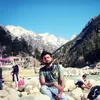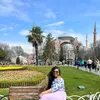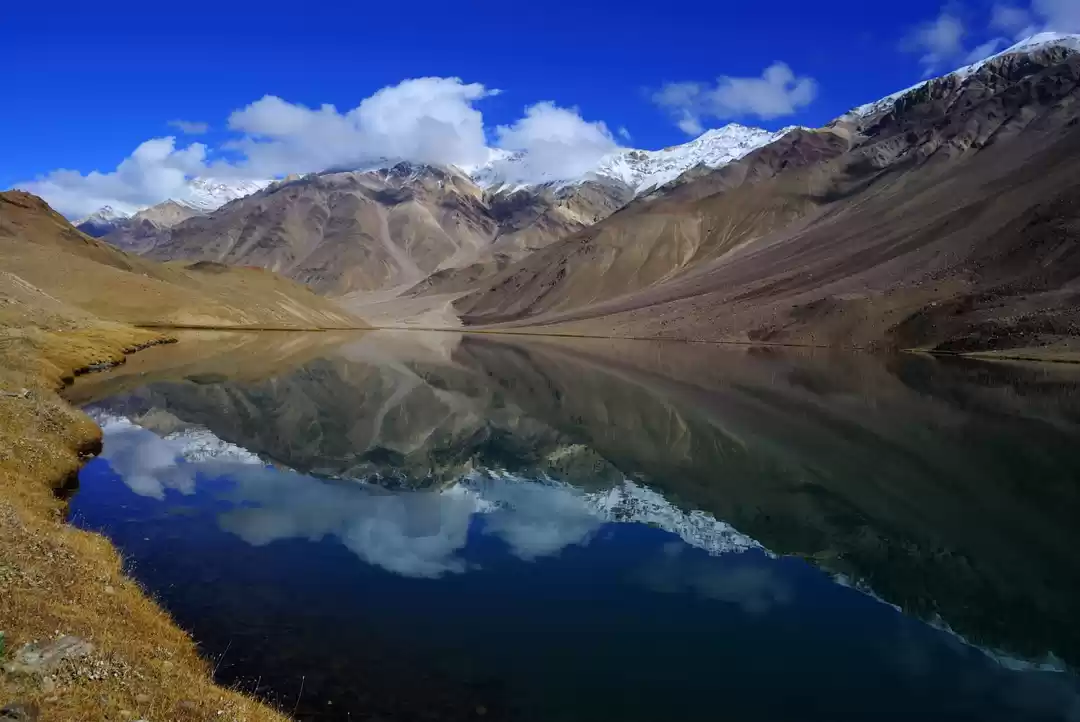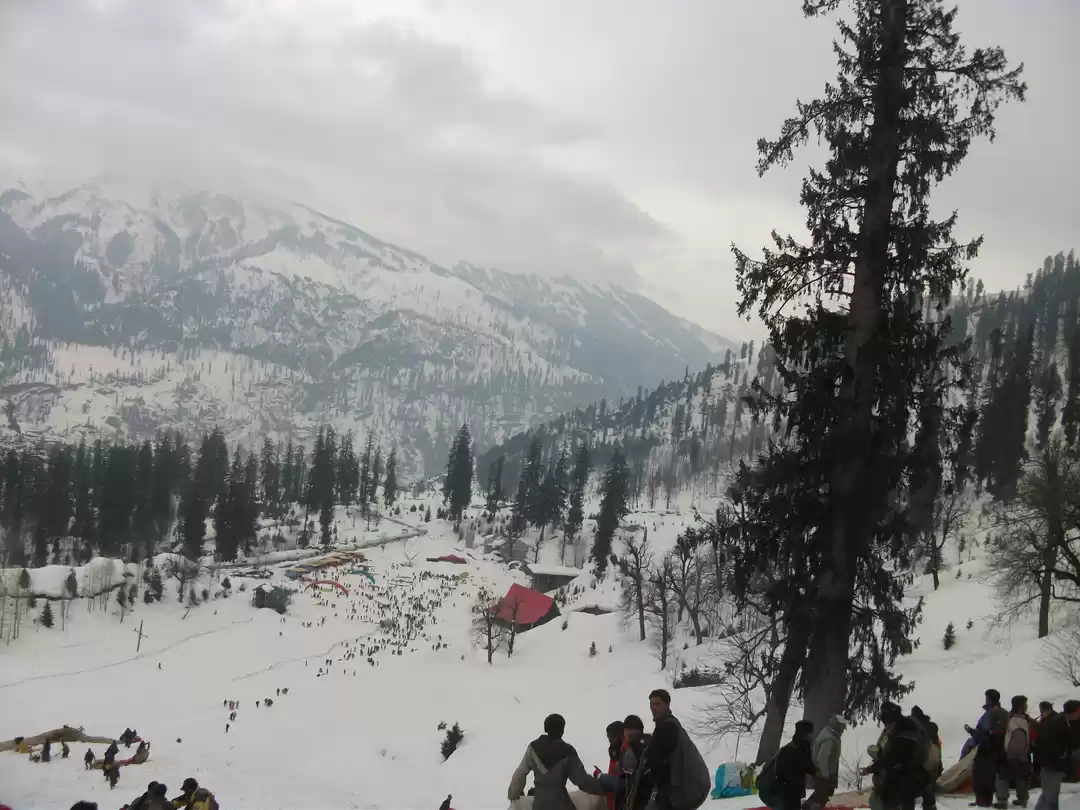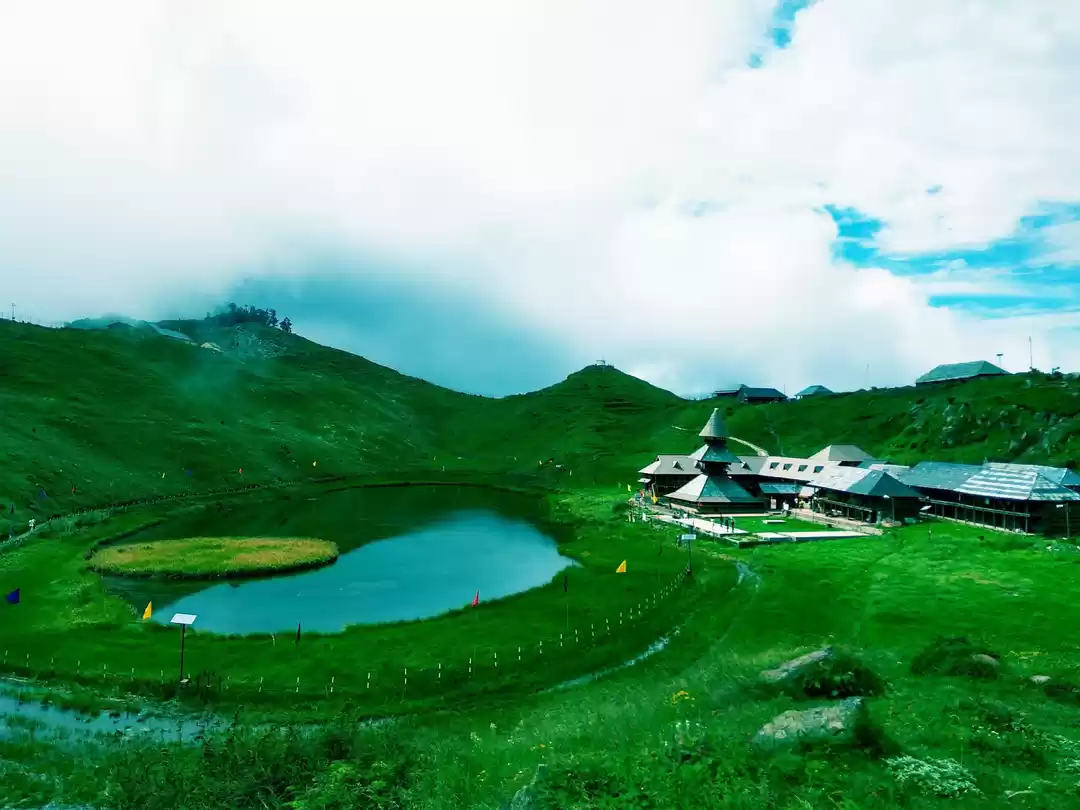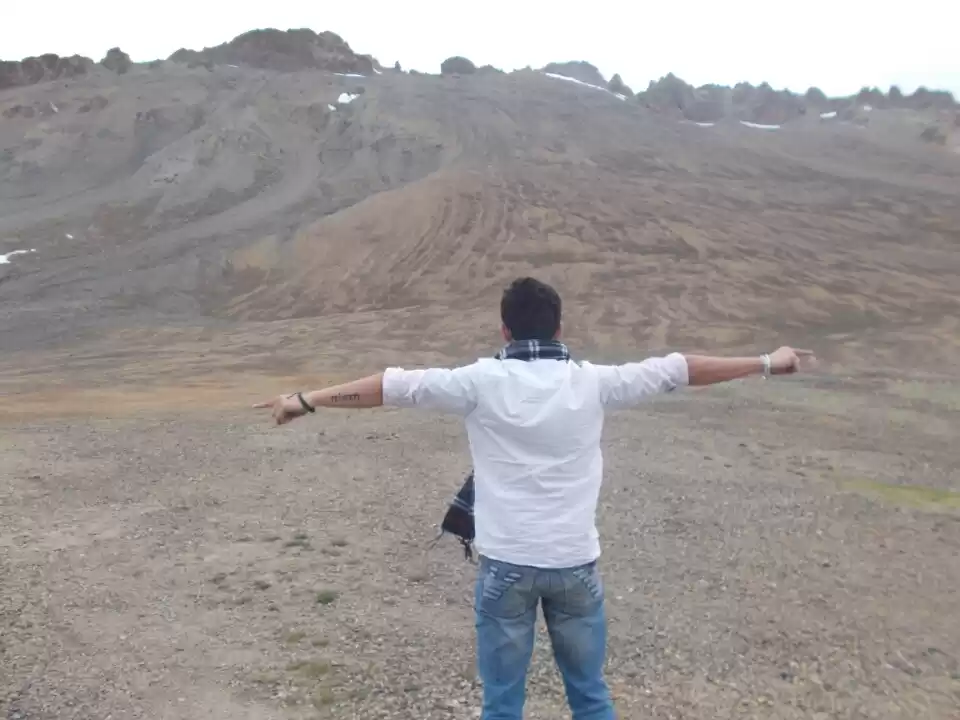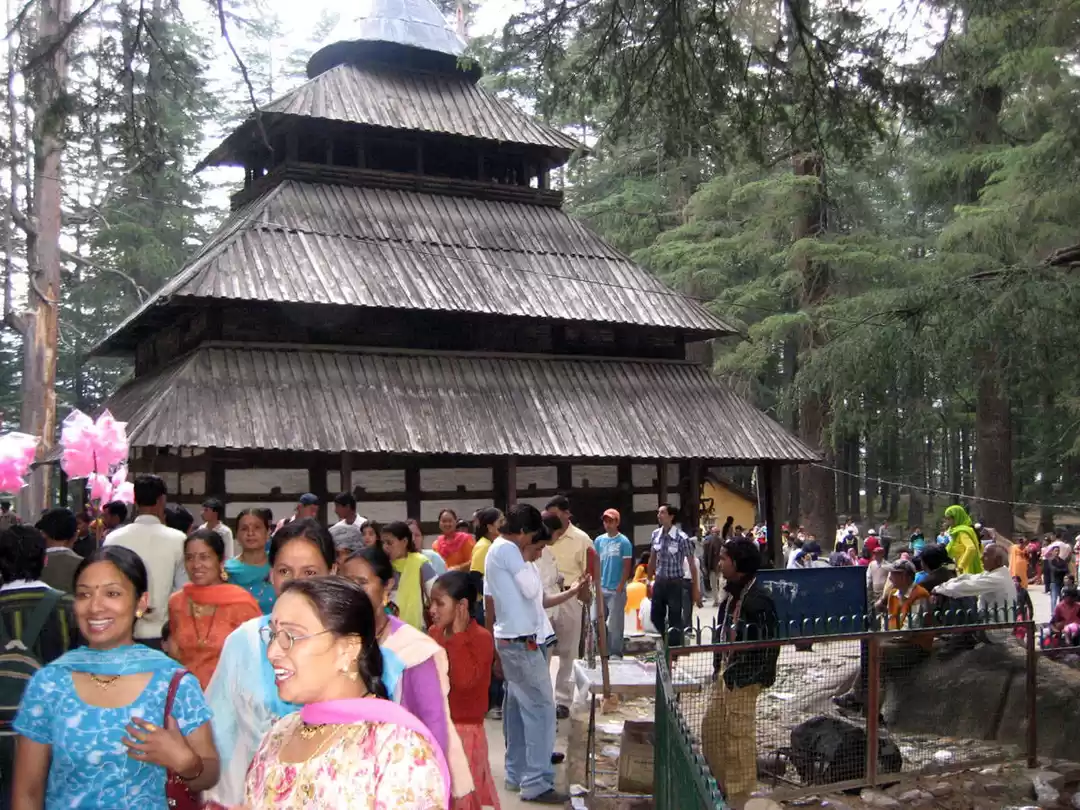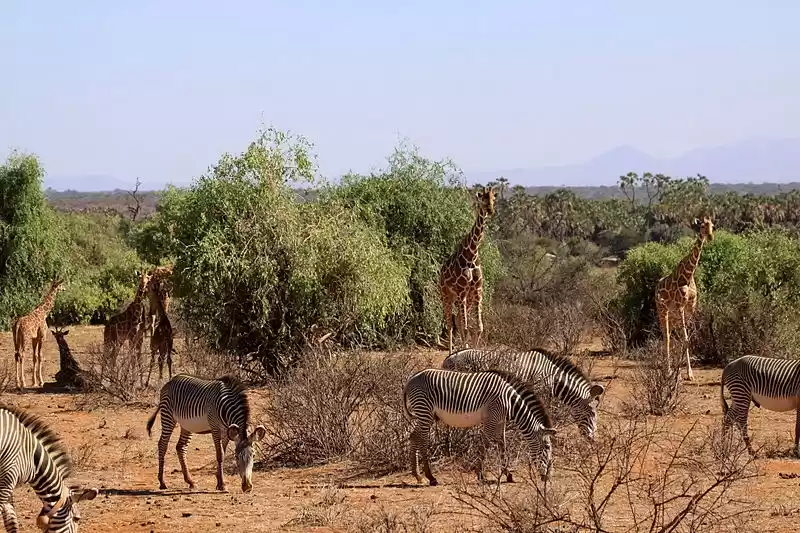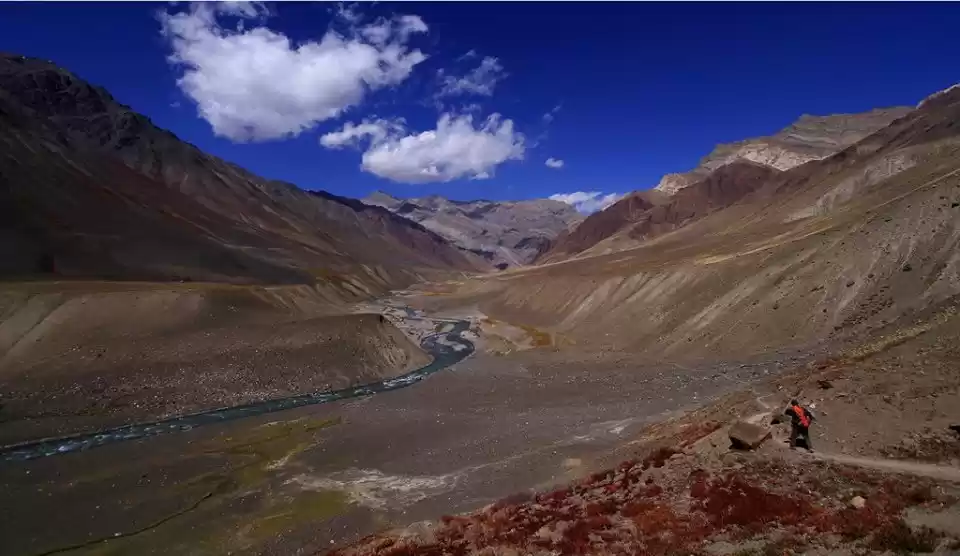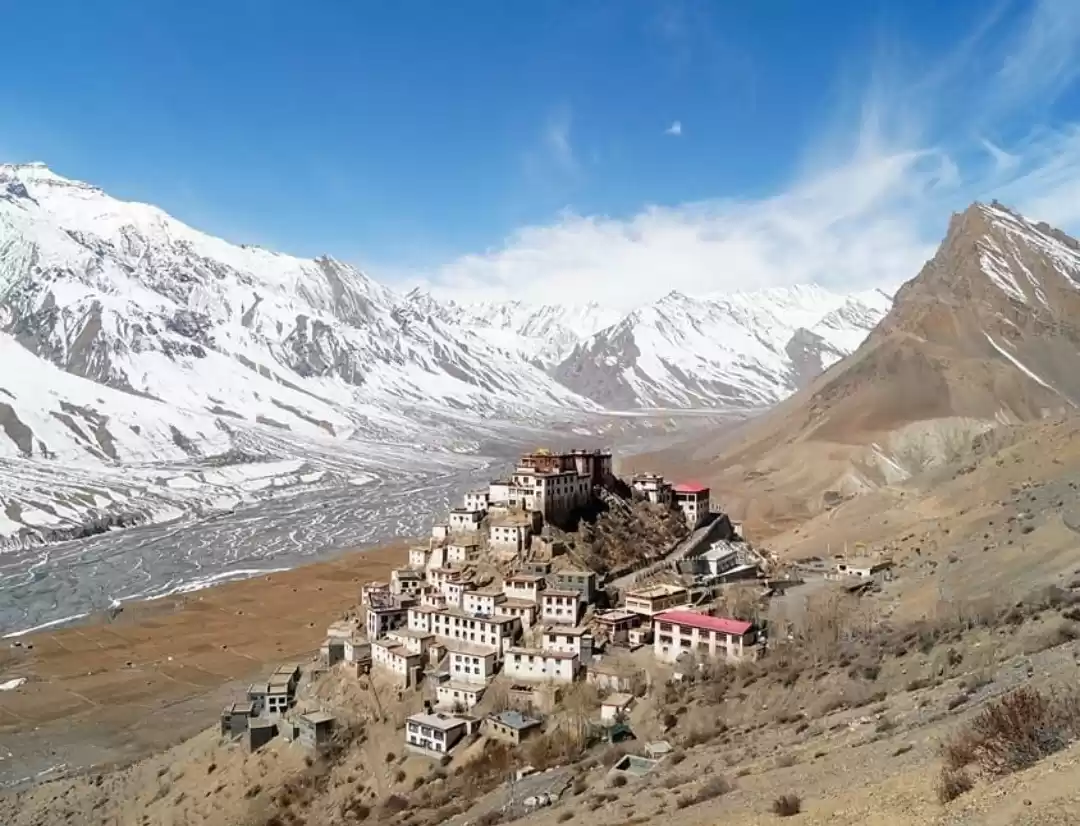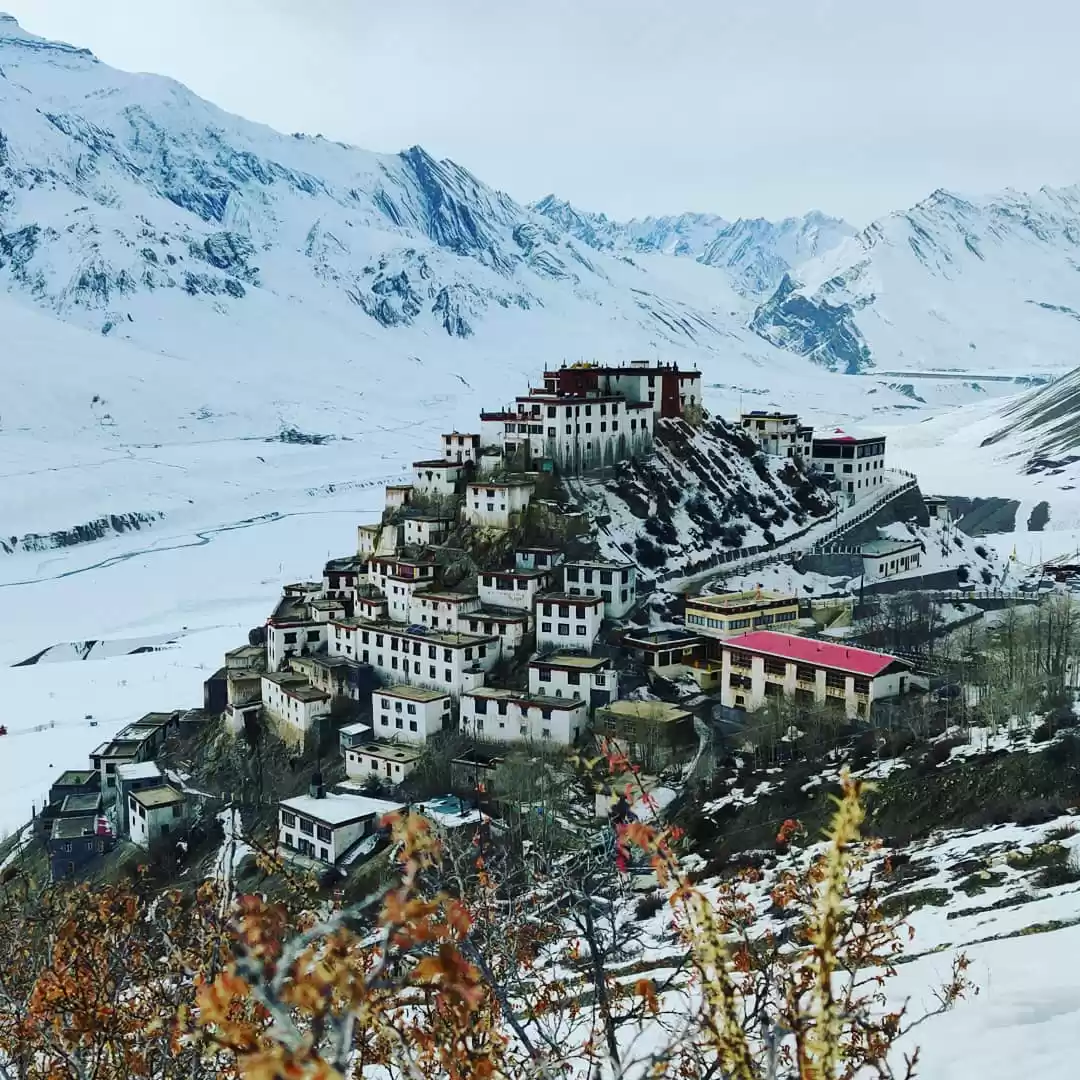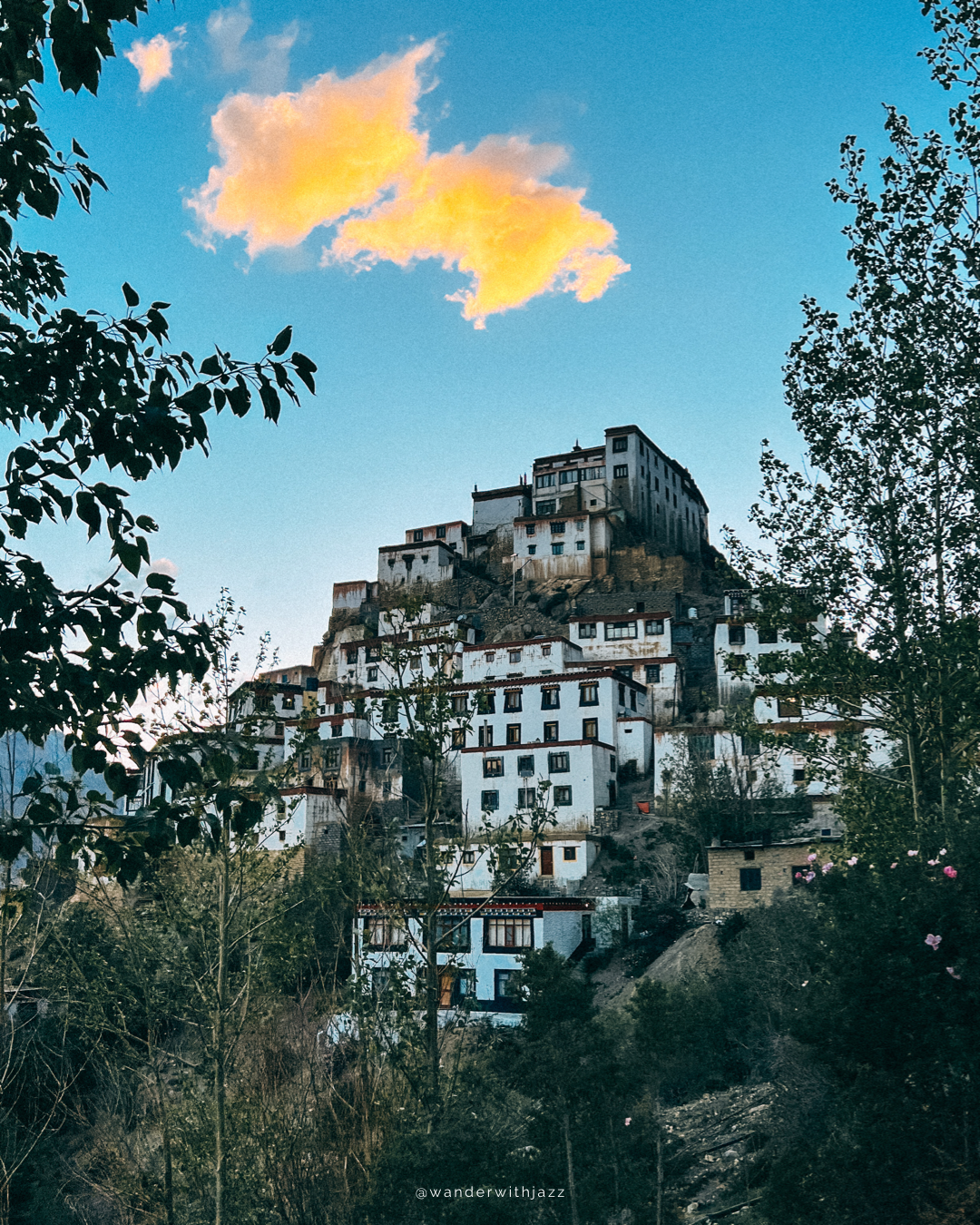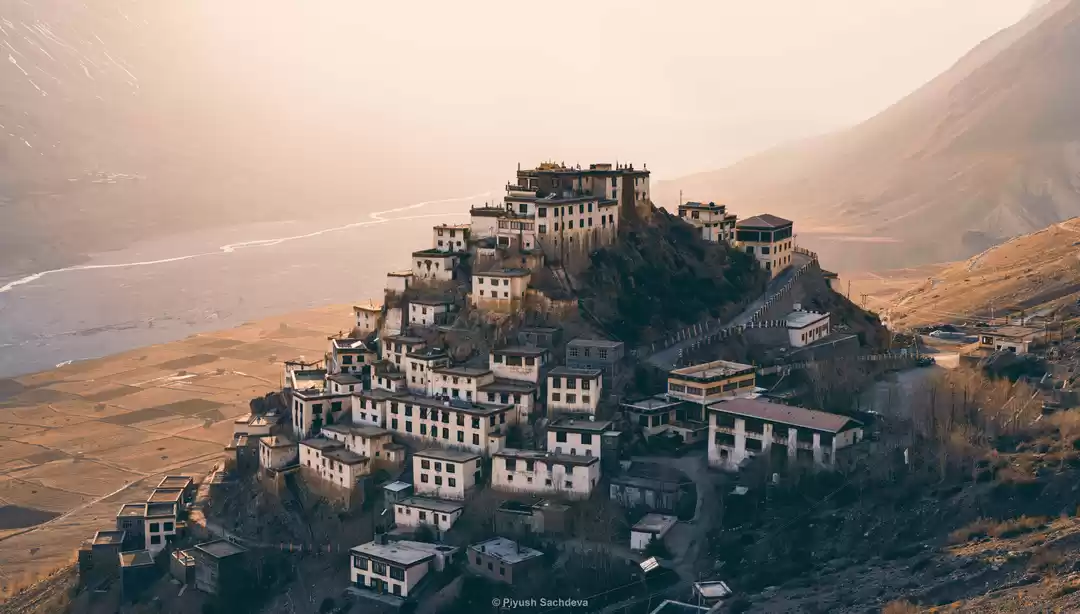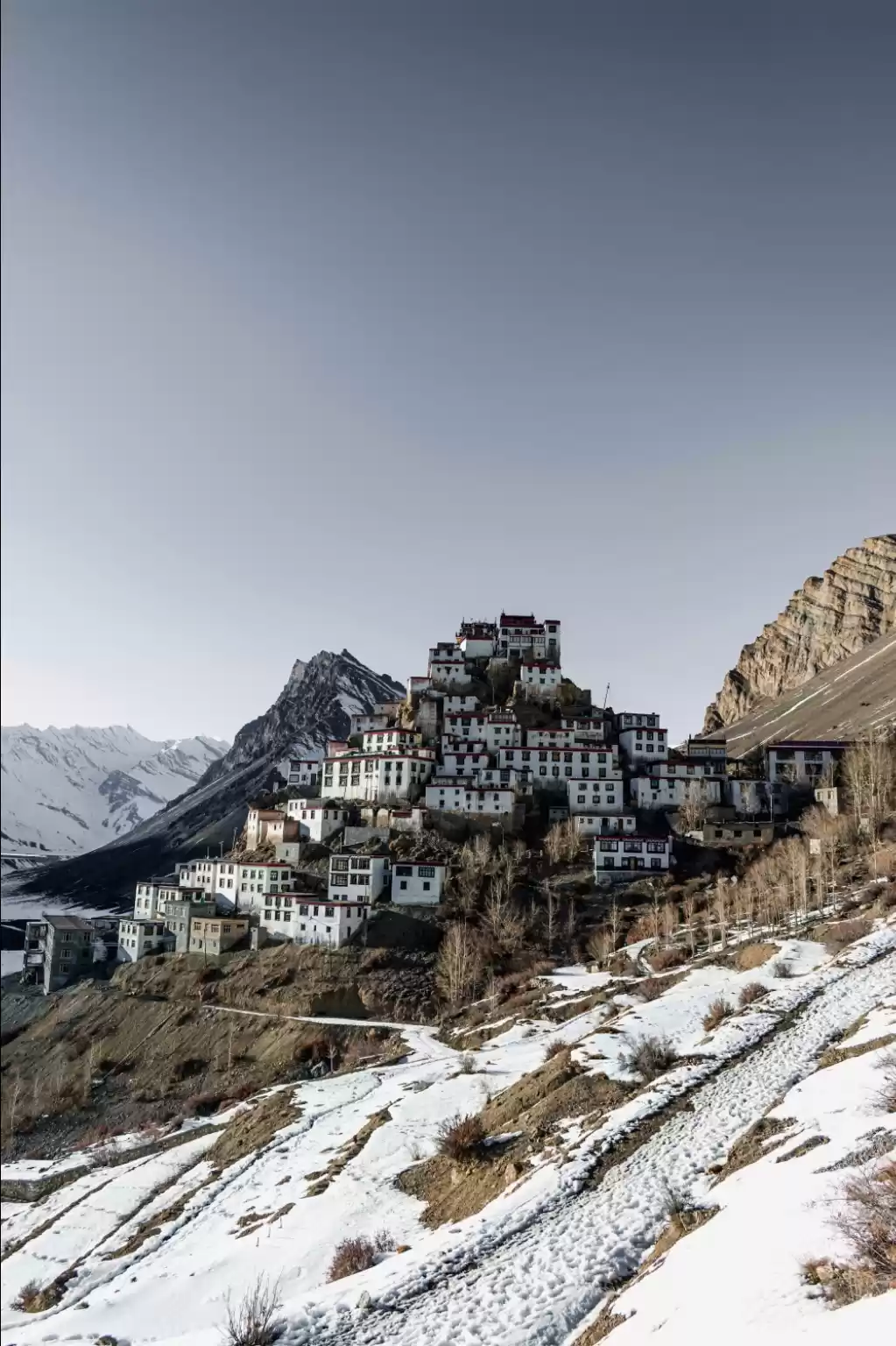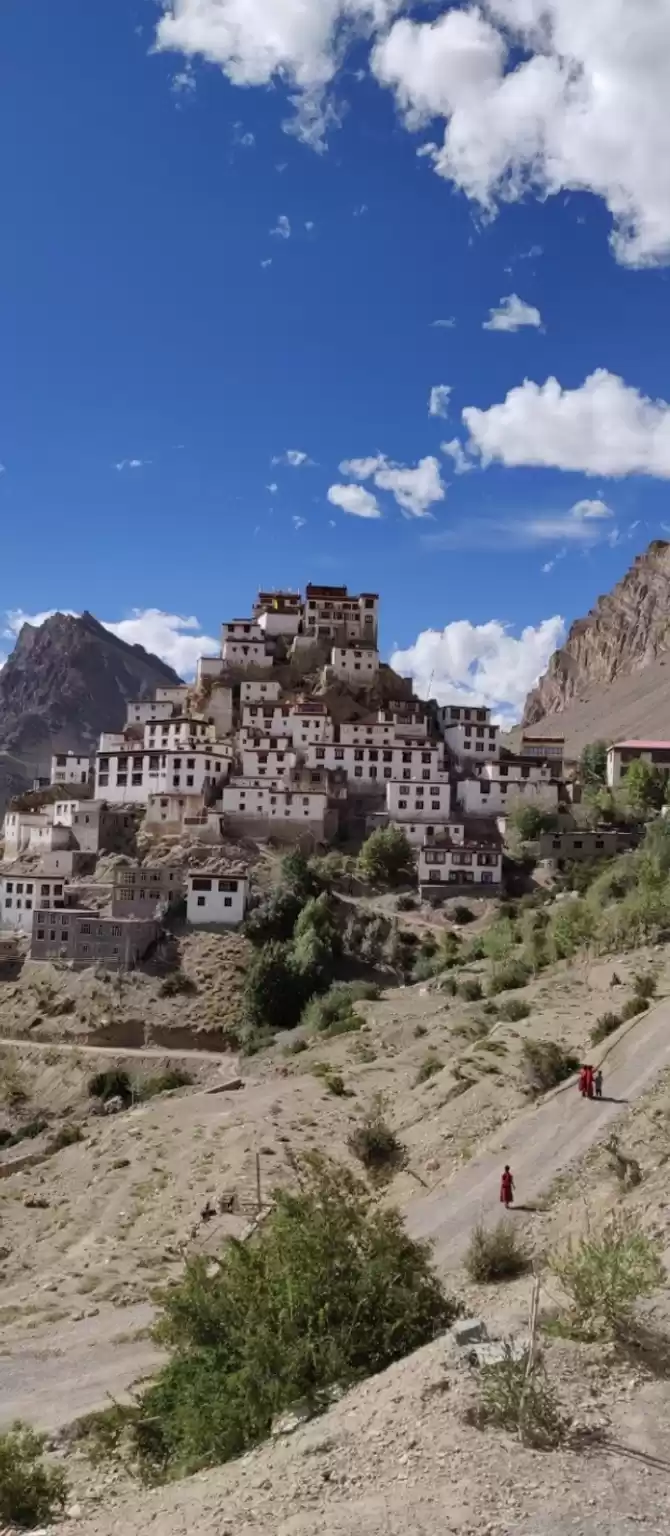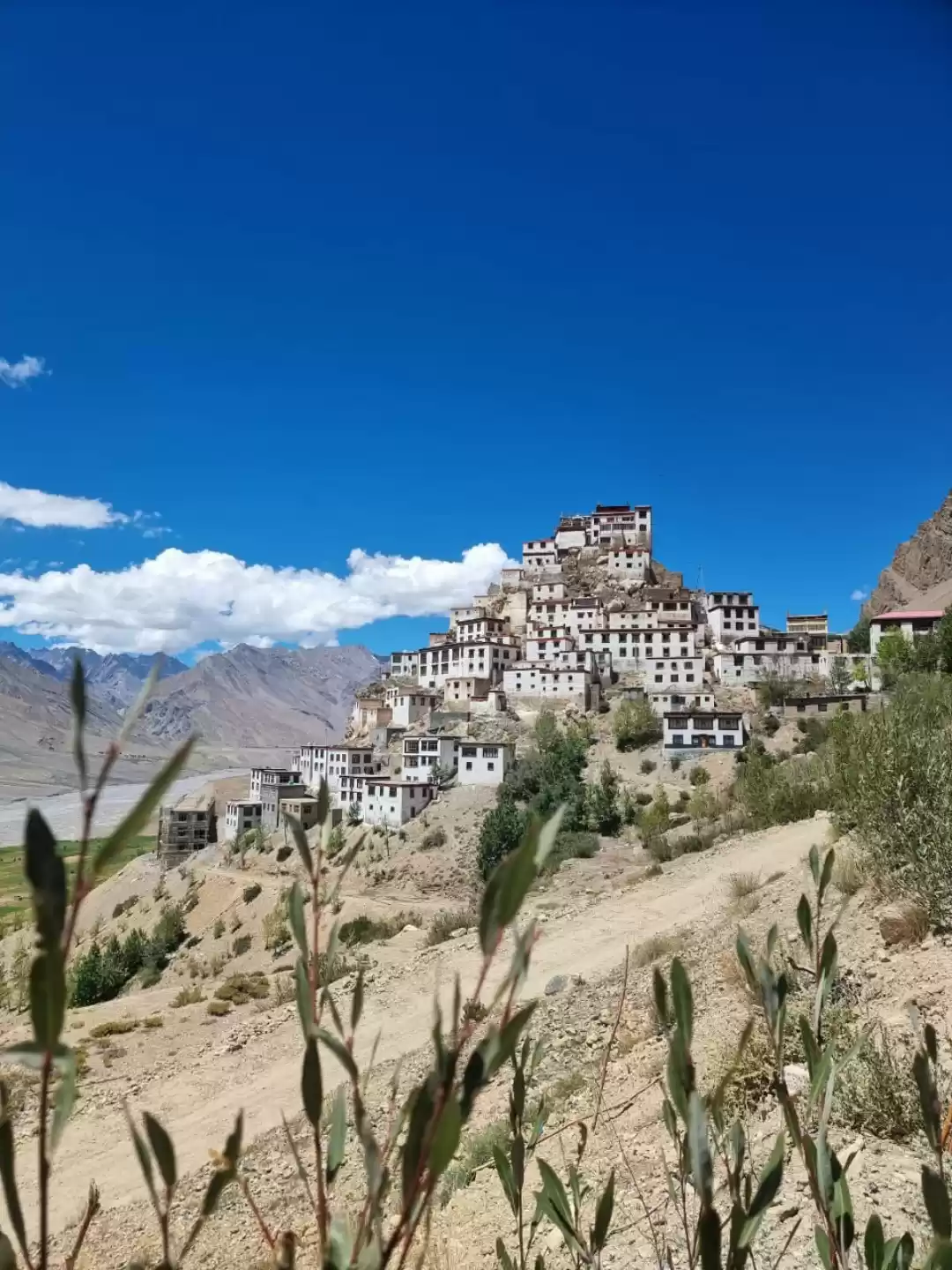Have you ever dreamed of visiting a place where you can witness the ancient traditions of Tibetan Buddhism, admire the stunning architecture and art of a centuries-old monastery, and enjoy the breathtaking views of the Himalayan mountains and valleys? Sounds like a dream, right? Well, this place actually exists and it is called the Key Monastery.
Key Monastery, also known as Kye Gompa or Ki Gompa, is one of the oldest and largest Buddhist monasteries in India. It is located in the Spiti Valley of Himachal Pradesh, at an altitude of 4,166 meters above sea level. It is a center of religious education for Lamas, who are the monks of Tibetan Buddhism. It is also a popular tourist attraction for travelers who want to experience the culture, nature, and spirituality of Spiti Valley.
In this article, we will explore everything you need to know about the Key Monastery, from its history and architecture to its festivals and activities. We will also give you some tips on how to plan your visit and make the most of your experience. So, let’s get started!
History and Significance of Key Monastery
The history of Key Monastery dates back to the 11th century, when it was founded by Dromton, a disciple of the famous teacher Atisha. According to legend, the monastery was built on a hill that resembled a mythological bird called Garuda. The monastery was initially a small structure, but over time it expanded and renovated to accommodate more monks and visitors.
The monastery has witnessed several invasions and natural disasters throughout its history. It was attacked by Mongols in the 13th century, by Ladakhis in the 17th century, and by Sikhs in the 19th century. It was also damaged by earthquakes and fires several times. However, each time it was rebuilt and restored with the help of the local people and the government.
The monastery is considered to be one of the most important and influential monasteries in India. It is a religious training center for Lamas, who study various subjects such as philosophy, literature, astrology, medicine, etc. The monastery has produced some of the notable Lamas in Tibetan Buddhism, such as Dalai Lama XIV, who visited the monastery in 1960 and 2000.
The monastery is also known for its unique features and attractions. It has a fort-like structure that consists of three floors and several rooms. It houses a collection of statues, paintings, murals, manuscripts, and relics that reflect the Tibetan style and culture. It has a library that contains ancient books and scriptures. It has a prayer hall that can accommodate up to 300 monks. It has an assembly hall that hosts various ceremonies and events. It also has a museum that displays some of the rare and precious items from the monastery’s history.
Architecture and Art of Key Monastery
The architecture and art of Key Monastery are among its main attractions for visitors. The monastery showcases the Tibetan style and design that are influenced by Chinese, Indian, and Mongolian elements. The monastery has a multi-storeyed layout that resembles a stack of boxes. The rooms are connected by narrow corridors and staircases. The roofs are conical and covered with wooden planks. The walls are whitewashed and decorated with paintings and murals.

The monastery is home to some of the finest examples of Tibetan art and expression. It contains statues of Buddha and other deities that are made of metal or clay. It contains paintings of mandalas and thangkas that are colorful and intricate patterns that represent cosmic diagrams or spiritual teachings. It contains murals that depict scenes from Buddhist mythology or history such as the life of Buddha or the invasion by Mongols. It contains manuscripts that contain sacred texts or teachings written in Tibetan or Sanskrit languages. It contains relics that represent relics or symbols of Buddhism such as stupas or prayer wheels.
The architecture and art of Key Monastery are not only beautiful but also meaningful. They reflect the beliefs and values of Tibetan Buddhism and Spiti Valley. They convey messages of peace, compassion, wisdom, and harmony. They inspire awe and reverence among visitors who appreciate their craftsmanship and significance.
Also check out: Night at the Key Monastery
Festivals and Events at Key Monastery
One of the best ways to experience the culture and traditions of Key Monastery is to attend its festivals and events that are celebrated throughout the year. These festivals and events showcase the religious and social aspects of Tibetan Buddhism and Spiti Valley. They involve rituals, customs, dances, music, food, etc. They attract thousands of devotees and tourists who join in the festivities.
Some of the most popular festivals and events at Key Monastery are:

Cham Dance Festival:
This is a festival that is celebrated in June or July every year. It is also known as the Mask Dance Festival, as it involves monks wearing masks and costumes and performing dances that depict the victory of good over evil. The dances are accompanied by drums, cymbals, horns, etc. The festival is a way of honoring the protector deities of Tibetan Buddhism and seeking their blessings.

Kalachakra Ceremony:
This is a ceremony that is performed by the Dalai Lama or his representative once in every 12 years. It is also known as the Wheel of Time Ceremony, as it involves the creation and destruction of a sand mandala that represents the cycle of life and death. The ceremony is a way of imparting the teachings and initiations of Tibetan Buddhism and promoting world peace and harmony.
These festivals and events are not only fun and entertaining but also educational and spiritual. They offer visitors a chance to learn about the history and philosophy of Tibetan Buddhism and Spiti Valley. They also offer visitors a chance to interact with the monks and locals and experience their hospitality and generosity.
How to Reach Key Monastery
If you are planning to visit Key Monastery, you need to know how to reach it from different cities in India. The monastery is located in the Spiti Valley of Himachal Pradesh, which is one of the most remote and isolated regions in India. The valley is accessible only by road, as there are no airports or railway stations nearby. The road conditions are also challenging, as they are narrow, winding, steep, and prone to landslides and snowfall.
The best way to reach Key Monastery by road is from Manali, which is a popular hill station in Himachal Pradesh. Manali is well connected by road from Delhi, Chandigarh, Shimla, etc. From Manali, you can take a bus or a car or a bike to Key Monastery via Rohtang Pass and Kunzum Pass. The distance is about 210 km and the duration is about 9 hours. The cost varies depending on the mode of transportation and the season. For example, a bus ticket may cost around Rs. 500 per person, while a car rental may cost around Rs. 10,000 per day.
Another way to reach Key Monastery by road is from Shimla, which is another popular hill station in Himachal Pradesh. Shimla is well connected by road from Delhi, Chandigarh, Amritsar, etc. From Shimla, you can take a bus or a car or a bike to Key Monastery via Kinnaur Valley and Tabo Village. The distance is about 420 km and the duration is about 16 hours. The cost varies depending on the mode of transportation and the season. For example, a bus ticket may cost around Rs. 800 per person, while a car rental may cost around Rs. 15,000 per day.
Best Time to Visit Key Monastery
The best time to visit Key Monastery depends on the weather and road conditions of Spiti Valley. The valley experiences four seasons: summer, monsoon, winter, and spring. Each season has its own advantages and disadvantages for visiting the monastery.

Summer (May to July):
This is the peak season for visiting Key Monastery, as the weather is pleasant and sunny with temperatures ranging from 15°C to 25°C. The road conditions are also good as there is no snowfall or landslides. The monastery looks beautiful with greenery and flowers around it. The festivals and events are also held during this season. However, this season also attracts more tourists and crowds, which may affect your experience.
Monsoon (August to September):
This is the off-season for visiting Key Monastery, as the weather is unpredictable and rainy with temperatures ranging from 10°C to 20°C. The road conditions are also bad as there may be landslides or roadblocks due to heavy rainfall. The monastery looks dull with mud and clouds around it. The festivals and events are also not held during this season. However, this season also offers some advantages such as less tourists and crowds, lower prices, and more chances of seeing wildlife.
Winter (October to April):
This is the most challenging season for visiting Key Monastery, as the weather is harsh and cold with temperatures ranging from -10°C to 10°C. The road conditions are also very difficult as there may be snowfall or ice on the roads. The monastery looks majestic with snow-capped mountains and valleys around it. The festivals and events are also rare during this season. However, this season also offers some rewards such as more adventure and thrill, more solitude and peace, more cultural immersion with the monks and locals.
Spring (April to May):
This is the transition season for visiting Key Monastery, as the weather is mild and pleasant with temperatures ranging from 10°C to 20°C. The road conditions are also improving as there is less snowfall or landslides.
Places to Visit Near Key Monastery
If you are visiting Key Monastery, you should not miss the opportunity to explore some of the nearby attractions that can enhance your experience of Spiti Valley. These attractions are located within a short distance from the monastery and offer a variety of culture, nature, and adventure. Here are some of the places that you can visit near Key Monastery:

Kibber Village:
This is a small village that is situated about 7 km from Key Monastery. It is one of the highest inhabited villages in the world, at an altitude of 4,270 meters above sea level. It is known for its traditional houses made of stone and mud, its scenic views of the mountains and valleys, and its rich wildlife such as snow leopards, ibexes, blue sheep, etc. You can visit this village to experience the rural life and culture of Spiti Valley.

Chicham Bridge:
This is a suspension bridge that connects Kibber Village with Chicham Village. It is one of the highest bridges in Asia, at an altitude of 4,140 meters above sea level. It spans over a gorge that is 500 meters deep and 1 km wide. It offers a thrilling and panoramic view of the Spiti River and its surroundings. You can cross this bridge to feel the adrenaline rush and capture some amazing photos.

Pin Valley National Park:
This is a national park that covers an area of about 675 sq km in Spiti Valley. It is home to some of the rare and endangered species of flora and fauna such as snow leopards, Tibetan wolves, Himalayan griffon vultures, juniper trees, etc. It also has some of the ancient monasteries such as Kungri Monastery and Tiling Monastery. You can visit this park to enjoy the natural beauty and diversity of Spiti Valley.
Tabo Monastery:
This is another Buddhist monastery that is located about 50 km from Key Monastery. It is one of the oldest monasteries in India, dating back to the 10th century. It is also known as the Ajanta of the Himalayas, as it has some of the finest examples of Indo-Tibetan art and architecture.
It has a complex that consists of nine temples, four stupas, and several caves. It has a collection of statues, paintings, murals, and manuscripts that depict the Buddhist teachings and culture. You can visit this monastery to admire the ancient art and architecture of Spiti Valley.

Dhankar Monastery:
This is yet another Buddhist monastery that is located about 40 km from Key Monastery. It is one of the most spectacular monasteries in India, as it is perched on a cliff overlooking the confluence of the Spiti and Pin rivers. It is also one of the most endangered monasteries in India, as it is threatened by erosion and landslides.
It has a complex that consists of a main temple, a prayer hall, a museum, and a fort. It has a collection of statues, paintings, murals, and relics that reflect the Tibetan style and culture. You can visit this monastery to witness the stunning views and the endangered heritage of Spiti Valley.
You may also like to check out: Halls of Silence,Key Monastery & Kibber – Spiti Valley in Winter
Things to Do at Key Monastery
Visiting Key Monastery is not only about seeing its history and architecture, but also about doing some activities that can make your trip more memorable and enjoyable. There are many things that you can do at Key Monastery, such as:

Attending prayer sessions:
One of the most spiritual and peaceful things that you can do at Key Monastery is to attend its prayer sessions that are held daily in the morning and evening. You can join the monks and locals in chanting, meditating, and offering prayers to Buddha and other deities. You can also listen to the soothing sounds of the bells, drums, horns, etc. that are used during the prayer sessions. You can also witness the rituals and ceremonies that are performed by the monks during special occasions such as festivals or events.
Exploring the architecture and art:
Another thing that you can do at Key Monastery is to explore its architecture and art that are spread across its three floors and several rooms.
You can admire the statues, paintings, murals, manuscripts, and relics that are displayed in various halls and chambers. You can also learn about their meanings and significance from the monks or guides who are available at the monastery. You can also appreciate the craftsmanship and beauty of the monastery’s structure and design.
Enjoying the scenic views:
One more thing that you can do at Key Monastery is to enjoy the scenic views of the mountains and valleys that surround it. You can climb up to the rooftop or terrace of the monastery and get a panoramic view of the Spiti River and its tributaries. You can also walk around the monastery’s premises and get a closer view of the flora and fauna that grow around it. You can also take some photos or videos of the monastery and its surroundings.
Interacting with the monks and locals:
The last thing that you can do at Key Monastery is to interact with the monks and locals who live near it. You can talk to them and learn about their lives, culture, traditions, etc. You can also ask them questions or share your opinions about their religion, history, etc. You can also participate in their activities such as cooking, farming, teaching, etc. You can also offer them some gifts or donations as a gesture of gratitude or goodwill.
Tips for Visiting Key Monastery
Before you visit Key Monastery, you should keep in mind some tips that can help you plan your trip better and make your experience smoother and safer. Here are some tips that you should follow:

Carry warm clothes: The weather at Key Monastery can be very cold, especially during winter or night time. Therefore, you should carry warm clothes such as jackets, sweaters, gloves, caps, etc. to protect yourself from the cold.
Respect the local culture: The culture at Key Monastery is very different from other parts of India. Therefore, you should respect their culture by following their rules and customs such as removing your shoes before entering the monastery, dressing modestly, not touching or disturbing any religious objects or symbols, not taking photos without permission, etc.
Book accommodation in advance: The accommodation options near Key Monastery are very limited, as there are only a few hotels or homestays available. Therefore, you should book your accommodation in advance to avoid any inconvenience or disappointment. You can book your accommodation online or through travel agents or tour operators.
Hire a guide or a driver: The road to Key Monastery is very difficult and dangerous, as it is narrow, winding, steep, and prone to landslides and snowfall. Therefore, you should hire a guide or a driver who knows the route well and can drive safely. You can hire a guide or a driver online or through travel agents or tour operators.
Carry cash or cards: The facilities near Key Monastery are very basic, as there are no ATMs or banks nearby. Therefore, you should carry enough cash or cards to pay for your expenses such as food, transportations, accommodation, entry fees, etc. You can also use your cards to pay online or through apps such as Google Pay, Paytm, etc.
Take medicines or precautions: The altitude at Key Monastery can cause some health issues such as altitude sickness, motion sickness, headache, nausea, etc. Therefore, you should take some medicines or precautions to prevent or treat these issues. You can consult your doctor before your trip and carry some medicines such as Diamox, Paracetamol, Avomine, etc. You can also drink plenty of water, eat light food, avoid alcohol or smoking, and rest well.
Key Monastery is a hidden gem of Spiti Valley that you must visit if you are looking for a unique and unforgettable experience. It is a place where you can witness the ancient and rich culture of Tibetan Buddhism, admire the stunning and diverse architecture and art of a centuries-old monastery, and enjoy the breathtaking and serene views of the Himalayan mountains and valleys.
It is a place where you can learn, explore, discover, and connect with yourself and others.
So what are you waiting for? Pack your bags and get ready to explore one of the most amazing and spiritual places in India: the Key Monastery. And don’t forget to tell us how you liked it in the comments below.

